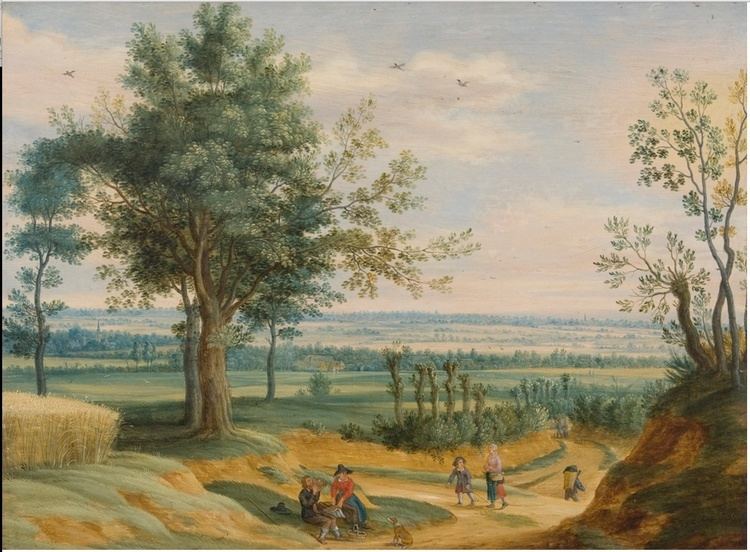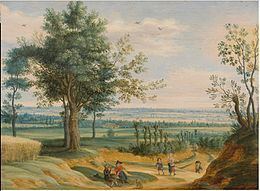Name Izaak Oosten | ||
 | ||
Izaak van Oosten, Isaak van Oosten or Isaac van Oosten (sometimes even: 'Izaak van Costen') (10 December 1613 – December 1661) was a Flemish Baroque landscape and cabinet painter.
Contents

Life
Little is known about his life and training. He was born in Antwerp as the son of an art dealer with the same name who had become a master in the Antwerp Guild of Saint Luke in 1617. There is no record of where he received his training or with which master(s) he studied. It is believed he painted for his father's shop and therefore did not initially register with the Guild. He only became in 1652 master of the Antwerp Guild of Saint Luke when he was already 39 years old after the Guild had insisted he join and pay his dues. He was active for only about a decade.
He died in Antwerp in 1661 without leaving any offspring.
Work
Van Oosten was specialized in landscape paintings and panels for Antwerp-made cabinets. His compositions appear to have been popular. His work incorporates all the elements of the Antwerp school of landscape painting of the first half of the 17th century. It shows a strong influence by other Antwerp landscape painters, in particular Jan Brueghel the Elder and contemporary Flemish painters such as Alexander Keirincx, Lucas van Uden and Jan Wildens. He was also influenced by the late work of Jan Brueghel the Younger to whom his work is sometimes ascribed.
His landscapes are simple and open. The open spaces of his mainly hilly landscapes are typically filled with a pond or road and several clusters of trees. There is an overall sense of gentleness and calm in these compositions. An even, gentle light spreads over the entire painting and the trees are untouched by the wind. He appears generally not to have been influenced by the woodland painters with their preference for dense forest scenes. A number of his landscapes have a Mediterranean flavour. There is no evidence that van Oosten travelled to Italy and his Italianate landscapes must therefore have been inspired by the work of other painters.
He regularly returned to the themes of The Garden of Eden and the Creation of the Animals, which allowed him to show off his skills in painting many animal species – mammals, fish and birds, as well as the imaginary unicorns. He often painted on copper, the smooth surface of which allowed him to arrive at his detailed descriptions of flora and fauna.
As other Antwerp painters of his time, he often collaborated with specialist painters in the creation of works. Willem van Herp is believed to have painted the staffage in numerous compositions of van Oosten. A good example of such collaboration are the two panels on the theme of the Four Elements, on which van Oosten collaborated with Pieter van Avont for the staffage and possibly Jan van Kessel the Elder for the animals and still-life elements.
Works by van Oosten can be found in the collections of the Uffizi, the Museo del Prado, the Hermitage Museum, the Musée des Beaux-Arts d'Orléans, the Museum of Fine Arts of Rennes, the Toledo Museum of Art and other museums.
